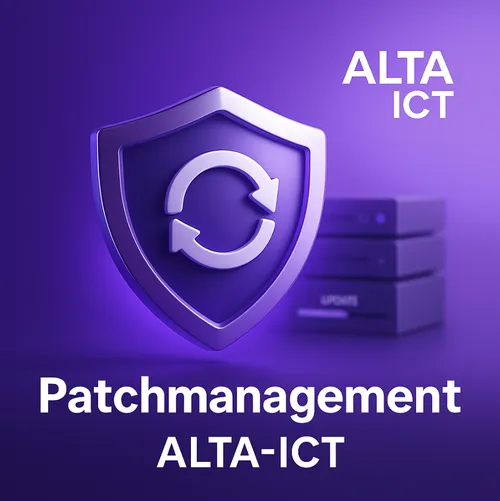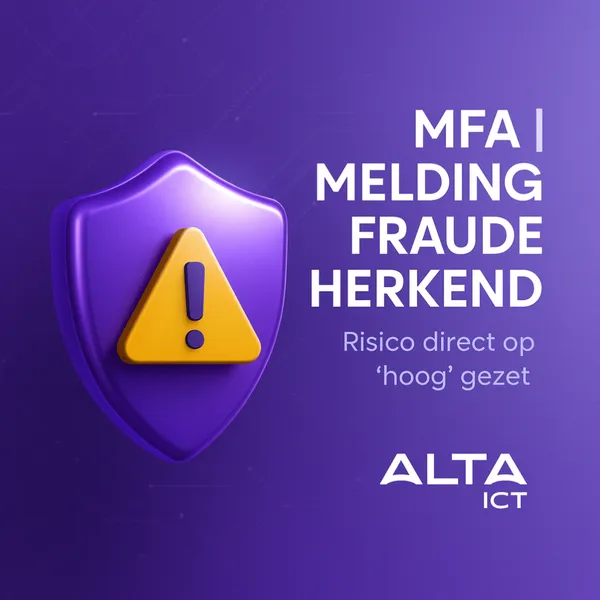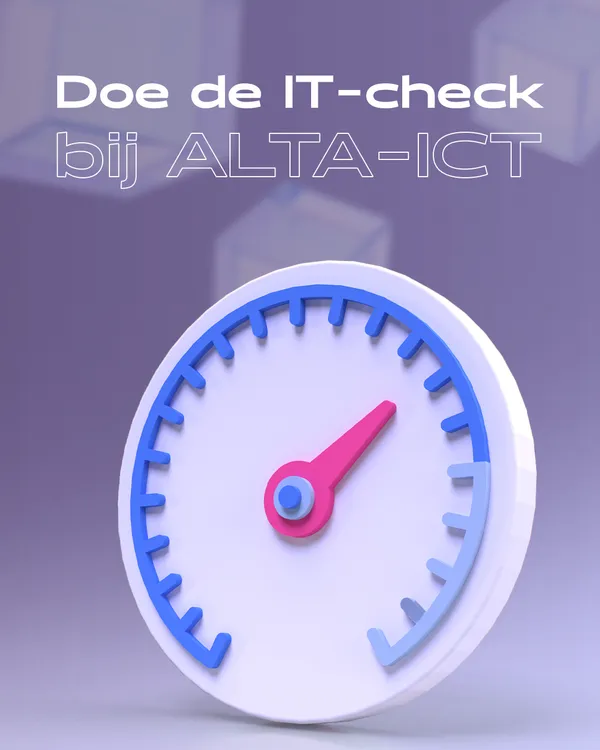
Knowledge base
August 06, 2025
Patch Management – Prevent the Perfect Storm
Many SMEs in the Netherlands don’t pay attention to patching until they have to. “Yes … someday” is a common response from entrepreneurs when it comes to updates. Yet the risk is great. Unpatched systems are the perfect breeding ground for cyber incidents, potentially leading to stalled business processes, data breaches and significant reputational damage.
In our daily practice at ALTA-ICT, we see two common causes of serious security problems:
-
Zero-day attacks that no one saw coming.
-
Old systems that simply cannot be updated.
These vulnerabilities pile up, while procrastination often ensues because no one dares to “touch the system.” But doing nothing is also a great risk.
Therefore, now is the time to work structurally on patch management. Especially since the government is providing subsidies starting July 18: up to 50% reimbursement of the costs, with a maximum of €1,250 per applicant.
What is patch management and why essential?
Patch management is the process of keeping software and systems up-to-date by installing security and functionality updates. For Dutch companies, this means not only higher cyber resilience, but also meeting legal obligations such as the AVG and, in some sectors, NEN7510 or BIO.
Important for Dutch SMEs:
-
Compliance: Preventing fines and penalties for data breaches.
-
Business continuity: Reduced risk of downtime.
-
Reputation protection: maintaining customer confidence.
-
Cost savings: Prevention of costly incident response.
The perfect storm for a cyber incident
Without proper patch management, we often see the following scenario:
❌ A vulnerability is exploited.
❌ Business-sensitive files leak out.
❌ Systems fail and chaos ensues.
Many of these problems are preventable with a modern workplace with automatic patch management.
How do you implement patch management in the Netherlands?
Step 1 – Inventory and risk analysis
-
Map all systems and software versions.
-
Check for end-of-life software (no more updates).
-
Analyze risks according to ISO27001 standards.
Step 2 – Implementation of automatic patching processes
-
Integrate solutions such as Microsoft Endpoint Manager.
-
Provide test environments to roll out updates securely.
-
Schedule critical patches off-peak.
Step 3 – Monitoring and reporting
-
Set alerts for failed updates.
-
Maintain patch status per device centrally.
-
Report monthly to management/IT team.
Step 4 – Continuous optimization
-
Evaluate policy quarterly.
-
Take into account new regulations (NIS2, AVG).
-
Train employees in cyber hygiene.
Common patching mistakes
-
Responding only to incidents – rather than preventively.
-
No test phase – updates disrupting production.
-
Incomplete inventory – obsolete devices are forgotten.
-
Lack of ownership – no one feels responsible.
-
No monitoring – updates fail undetected.
ROI of good patch management
Companies moving to automated patch management report:
-
60% fewer security incidents in the first year.
-
30% less IT management costs due to less manual work.
-
Higher compliance scores in audits.
-
More peace of mind for IT teams because urgent updates happen automatically.
The ALTA-ICT approach
At ALTA-ICT, we provide patch management as part of a modern workplace solution, fully ISO27001-, ISO9001- and NEN7510-certified.
Our added value:
-
Automatic & secure patching via proven tools.
-
Dutch compliance specialization (AVG, NEN7510, BIO).
-
Grant assistance in applying for government reimbursement.
-
24/7 monitoring through our Security Operations Center.
Conclusion and call-to-action
Patch management is not a luxury but a necessity. Moreover, with the new grant, there is no excuse to wait. Protect your organization from the perfect storm of cyber threats.
???? Book a free demo today via alta-ict.nl/en/contact and discover how we keep your systems automated, secure and compliant.
Reference
Want to know more?




